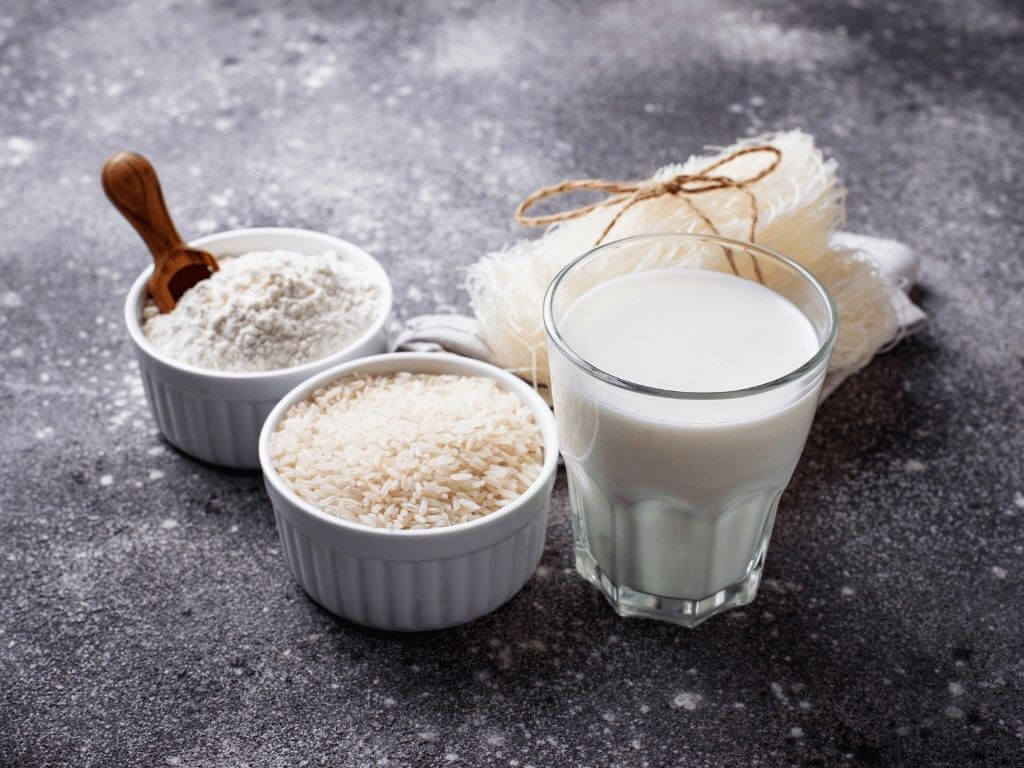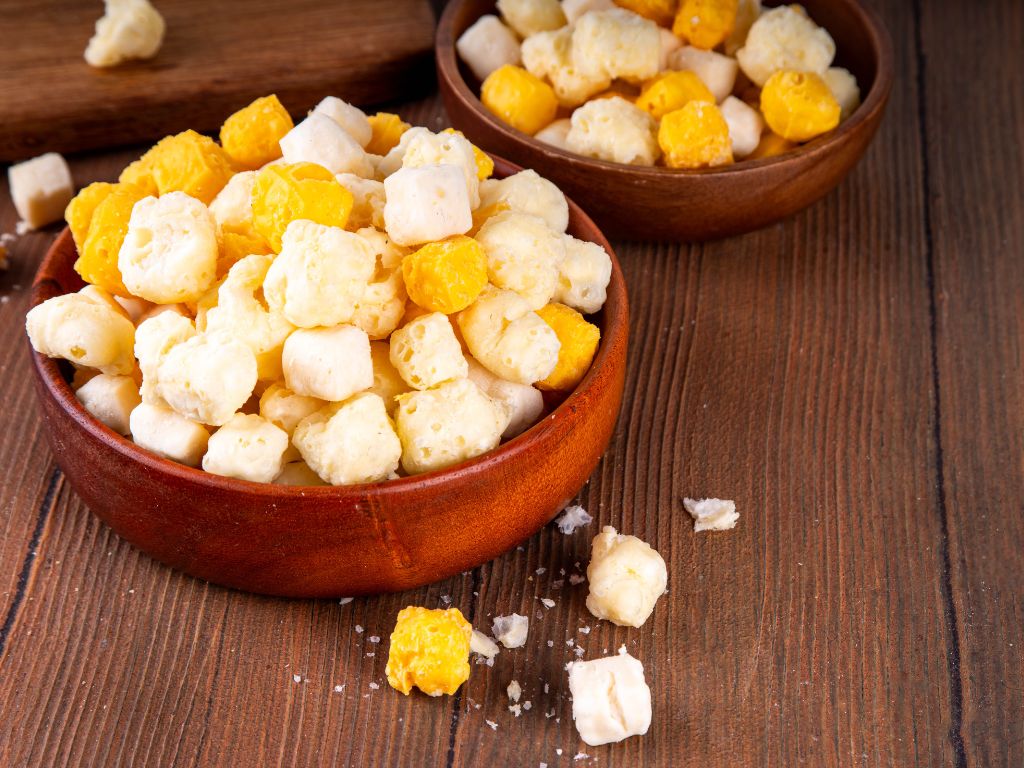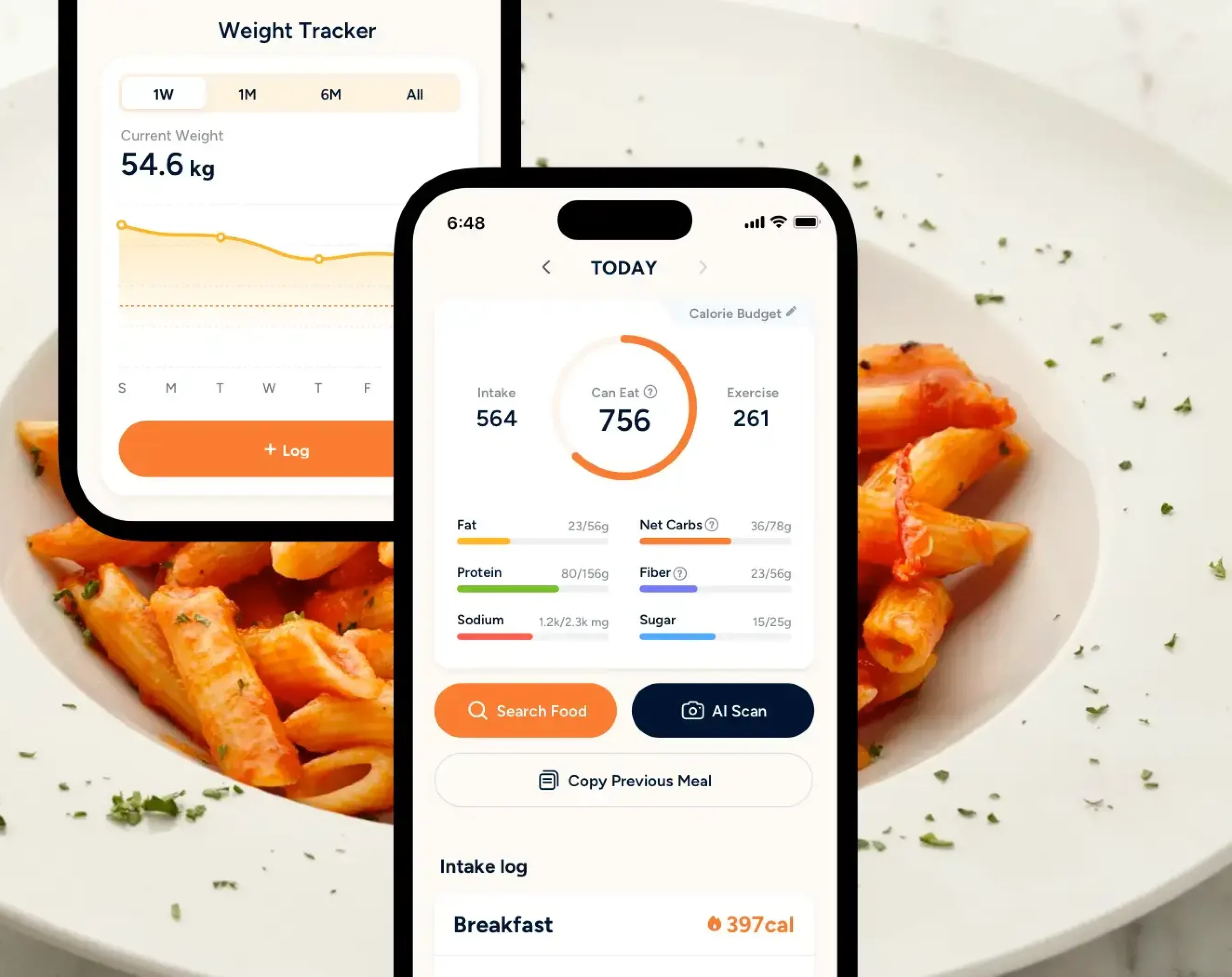Going on a carb-free diet is not a new approach. The carnivore diet is an example of a carb-free diet, as it focuses solely on eating meat. With this approach, it strips eating down to the basics, which are animal proteins, healthy fats, and very little else. For beginners, this may feel intimidating or slightly overwhelming. But with a clear, simple 7-day carnivore diet meal plan, it could help you to understand what you’re in for.
Key Takeaways
- Carnivore diet focuses on animal-based foods only.
- By limiting carbohydrates, the diet may promote fat burning (ketosis), stabilize blood sugar, and improve autoimmune or inflammatory symptoms.
- One of the main risk is nutrient deficiencies. Eliminating plant-based foods can lead to deficiencies in fiber, vitamins, and minerals, poor gut health, and long-term cardiovascular risks.
- The restrictive nature of the diet makes it difficult to maintain long-term.
What is the Carnivore Diet?
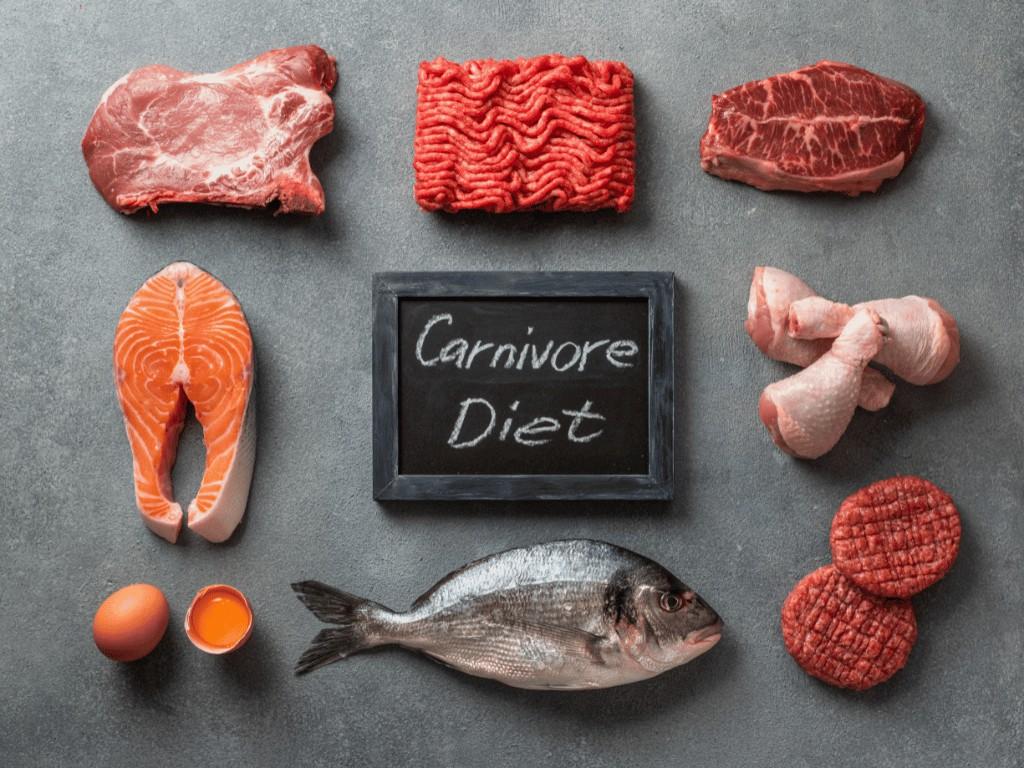
The carnivore diet is simply a dietary approach that focuses on eating animal-based foods while omitting everything else.
This means that you can expect to eat meat products such as beef, chicken, pork, fish, seafood, eggs, and dairy products while excluding fruits, vegetables, whole grains, legumes, nuts, and seeds.
Carnivore Diet Benefits
By following this diet, it is said that you will be able to achieve weight loss. This is due to limiting carbohydrate intake, which in turn causes your body to burn fat for energy instead.
Other claims of this diet are that it can help manage chronic conditions, lower blood sugar levels, and fight inflammation within the body [1].
While there is a lack of extensive research about the carnivore diet, some notable studies and clinical reports are available for us to examine the potential health benefits and health risks of following a carnivore diet.
The main benefits that the diet claims include:
a) Improves inflammatory or autoimmune symptoms
When removed from the diets of individuals suffering from rheumatoid arthritis and inflammatory bowel disease, both of which are autoimmune conditions, a 2021 survey found that up to 89% of 2,000 attributed relief in their symptoms. This is due to reducing or eliminating common dietary triggers such as gluten and phytates [2], as the carnivore diet is a diet with heavy restrictions.
b) Stabilizes blood sugar levels
A study that was published indicated that low-carb diets could quickly reduce A1C levels in individuals with prediabetes, suggesting potential benefits in blood sugar control [3]. This reduction can be credited to the lack of typical post-meal blood sugar spikes (or what is commonly known as “food coma”), especially after ingesting carbohydrates.
c) Promotes weight loss

While these findings are promising, it’s also worth noting that there’s still a lack of extensive research and studies on the carnivore diet and whether it’s truly beneficial in the long term. However, that does not stop the carnivore diet’s high-protein, low-carbohydrate diet from being supported by anecdotal evidence where significant weight loss and improvements in overall health were felt after adopting the diet [4].

Weight Loss Has Never Been Easier
Get accurate nutrition info instantly. Keep track of your progress.
Download Eato For FreeWhat Can You Eat on The Carnivore Diet Meal Plan?
The carnivore diet offers many animal-based foods that you can choose from, while being good sources of protein, fats, and essential nutrients and macronutrients.
Meat and poultry
- Beef: Ribeye, sirloin, tenderloin, ground beef, brisket, flank, chuck roast, Korean galbi (short ribs), Brazilian picanha, Argentinian asado
- Pork: Pork chops, pork belly, bacon, ham, ground pork, pork ribs, Filipino lechon, Chinese char siu, Spanish jamón ibérico
- Lamb: Lamb chops, ground lamb, lamb shanks, Middle Eastern kebabs, Indian mutton curry (without sauce if following strict carnivore), Greek souvlaki
- Goat: Jamaican curry goat, Nigerian asun, Indian goat stew (without added vegetables if strict carnivore)
- Venison: Deer steaks, ground venison, jerky
- Bison: Bison ribeye, bison burgers
- Elk: Elk steaks, ground elk
- Moose: Moose roasts, moose sausage
- Duck (Chinese roast duck, French confit)
- Chicken (Japanese yakitori, Peruvian pollo a la brasa)
- Turkey (American smoked turkey, Middle Eastern shawarma without sauce)
Organ meats
- Kidney: Grilled lamb kidneys (Middle Eastern or British style), Chinese stir-fried pork kidneys
- Liver: Beef, chicken, or lamb liver; served as French foie gras, Indian masala fry, or traditional Polish wątróbka
- Heart: Beef or chicken heart skewers (Peruvian anticuchos, Japanese yakitori style)
- Tongue: Beef tongue (Mexican tacos de lengua, Japanese gyutan)
- Brain: Goat or lamb brain (South Asian bheja fry, Turkish brain sauté)
- Bone marrow: Roasted marrow bones (French bistro style, Filipino bulalo broth)
- Spleen: Beef or lamb spleen (Egyptian kebda and tili dishes, Sicilian pani ca’ meusa sandwich meat)
Fish and seafood
- Fatty fish: Mackerel, salmon, sardines, anchovies, tuna (Japanese sashimi, Nordic smoked salmon, Filipino tinapa)
- Other fish types: Cod, haddock, halibut, seabass (Mediterranean grilled seabass, British fish fillet, Indian tandoori fish)
- Shellfish: Shrimp, crab, lobster, clam, scallop, oyster (Singapore chili crab, Cajun boiled shrimp, Italian vongole, Japanese grilled scallops)
- Squid and octopus (Korean ojingeo gui, Spanish pulpo a la gallega)
- Fish roe and caviar (Japanese ikura, Russian sturgeon caviar)
- Dried or salted fish (Caribbean saltfish, Scandinavian lutefisk, Korean myeolchi)
Animal fats
- Butter: Western cooking, used in French sauces, Indian ghee (clarified butter) as a traditional high-fat option
- Beef tallow: British-style roasts, American frying, and Nigerian suya marinades
- Pork lard: Mexican carnitas, Filipino adobo, and Southern U.S. cooking
- Duck fat: French confit, Chinese roast duck, and Vietnamese-style stir-frying
- Goose fat (Central European potato roasts, German schmalz)
- Lamb fat (Middle Eastern kebabs, Turkish kofta)
- Fish oil and cod liver oil (Nordic traditional diets)
Eggs and dairy products
- Chicken eggs: Scrambled, poached, or boiled; used globally from American breakfasts to Chinese tea eggs
- Duck eggs: Filipino balut, Thai salted duck eggs, and rich baked goods
- Quail eggs: Japanese bento boxes, Korean street food skewers, and Mediterranean tapas
- Parmesan cheese: Italian hard cheese, ideal for shaving over grilled meats
- Cheddar cheese: English-origin cheese, used in carnivore omelets or as snack slices
- Mozzarella cheese: Italian soft cheese, eaten fresh or melted over meat dishes
- Heavy cream: Used in sauces, bulletproof coffee, and French-style soups
- Full-fat yogurt: Greek or Middle Eastern labneh (only if tolerated; some carnivores exclude dairy entirely)
- Ghee: Indian clarified butter, lactose-free and stable for high-heat cooking
- Halloumi: Cypriot grillable cheese rich in fat and protein
- Crème fraîche: French cultured cream used as a topping for savory dishes
Free 7-Day Carnivore Diet Meal Plan for Beginners (PDF available)
If you’re curious about trying the carnivore diet but aren’t sure where to start, this 7-day beginner-friendly meal plan can help guide you. It’s designed to focus on nutrient-dense animal-based foods while keeping things simple and easy to follow..
You can also find a PDF version available at the bottom for you to save, download, and use.
Day 1
- Breakfast: Scrambled eggs cooked in butter + bacon strips
- Lunch: Grilled ribeye steak
- Dinner: Pan-seared salmon with ghee
- Snack: Hard-boiled eggs
Day 2
- Breakfast: Omelette with ground beef
- Lunch: Roasted chicken thighs
- Dinner: Pan-fried lamb chops
- Snack: Pork rinds
Day 3
- Breakfast: Fried eggs and sausage links
- Lunch: Beef burger patties without buns
- Dinner: Grilled trout with butter
- Snack: Smoked salmon slices
Day 4
- Breakfast: Egg muffins with ground beef
- Lunch: Roast pork belly
- Dinner: Pan-seared cod with ghee
- Snack: Beef jerky
Day 5
- Breakfast: Scrambled eggs and steak slices
- Lunch: Grilled chicken drumsticks
- Dinner: Lamb shoulder roast
- Snack: Canned mackerel
Day 6
- Breakfast: Omelette with shrimp or crab meat
- Lunch: Ribeye steak or sirloin
- Dinner: Pan-fried chicken breast with butter
- Snack: Smoked salmon
Day 7
- Breakfast: Scrambled eggs and bacon
- Lunch: Roasted turkey leg
- Dinner: Grilled salmon with ghee
- Snack: Canned sardines
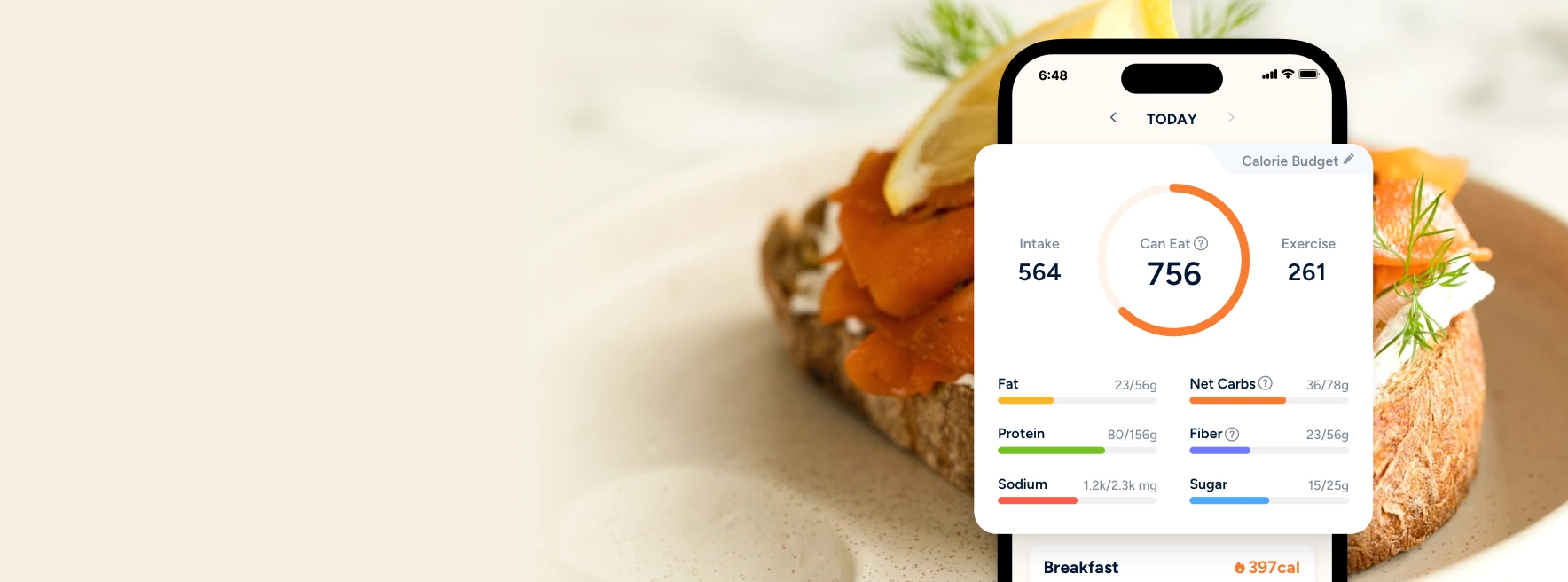
Smarter Nutrition Tracking
Track calories and over 100 other nutrients all in one place.
Download Eato For FreeRisks of Following the Carnivore Diet
Just like other fad diets, diets that focus on a single food group can carry risks and health benefits. Before jumping headfirst into the carnivore diet, some possible conditions to keep in mind will be highlighted below.
a) May cause nutritional deficiencies
The carnivore diet is a highly restrictive diet that may lead to nutritional deficiencies if not properly supplemented through other sources.
Under the U.S. Department of Agriculture (USDA), there is a set of dietary guidelines that are recommended for Americans to follow. In the guidelines, it is stated that consuming a variety of food groups is needed in order to satisfy our nutritional needs [5].
This means that you should be consuming both plant-based foods and animal-based foods as part of a healthy diet plan. Doing so allows you to meet the macronutrients, micronutrients, and dietary fiber amounts needed to sustain your body.
Following a carnivore eating pattern is generally discouraged as it’s commonly associated with nutritional deficiencies, poor gut health, an increased risk for cardiovascular disease, and possible chronic health complications. This is due to a high consumption of saturated fats and a low density of essential nutrients.
b) Unsustainable diet plan
In addition to that, following such a restrictive diet would also mean that it would be unsustainable in the long run. While you may see short-term health benefits such as weight loss, there’s a greater chance that you may not keep up with the diet long enough to keep the weight off.
Rather than opting to get on unsustainable, fad diets, the best way is still to consume a balanced, healthy diet and combine it with regular exercise.
The Final Takeaway: Should You Follow This Meal Plan?
Before you decide if the carnivore diet is for you, think about your own personal eating habits. Are you someone who naturally deviates towards meat? Are you a picky eater? Similarly, consider your health goals and medical history to get a feel of whether you’ll be able to keep the diet going long term. For those who have decided to commit to the diet, or are already on the diet, you may experience reduced cravings, stable energy, and even weight loss, all due to the nutrient-dense animal foods.
For those still on the fence, a more sustainable and manageable way to lose weight is by understanding what you are eating, nutritionally. Eato tracks your meals, nutrient intake, monitors progress, and stays consistent with your health goals. Try it today for free!

Smarter Nutrition Tracking
Track calories and over 100 other nutrients all in one place.
Download Eato For Free

